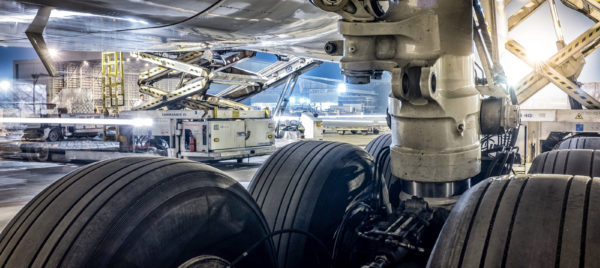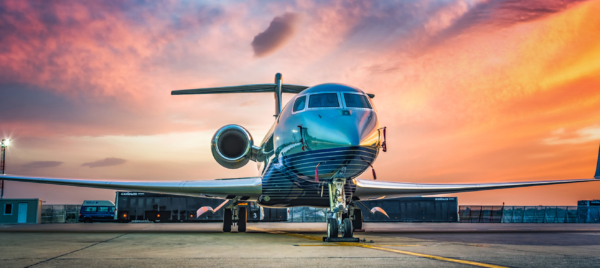MRO MANAGEMENT – ROAD TO RECOVERY
Wheels, brakes and landing gear MRO providers are looking ahead with optimism as aircraft return to the skies, although challenges remain. Emma Kelly reports.
October 2022: download a PDF of the article
Business is on the rise for companies involved in the maintenance, repair and overhaul of wheels, brakes and landing gears as the aviation industry is on its post-pandemic recovery path.
MRO providers are looking to expand activities and capabilities as new aircraft come online and fleets grow again.
Challenges persist, however, most notably supply chain issues and labour shortages.
Safran Landing Systems remained busy during the pandemic as landing gears reached their time between overhauls (TBO), although some operators received TBO extensions due to reduced cycles, according to Alan Doherty, vice president sales MRO. “We are seeing an increased demand for landing gear overhauls on narrowbody aircraft, with some very significant contracts being awarded,” he says. “The long-range market is taking longer to recover and a lot of aircraft have been returned to the lessor and overhauls are delayed as they search for future customers for these aircraft. We expect the overall volume of activity to surpass pre-pandemic levels shortly.”
Safran has landing gear MRO facilities and capabilities worldwide, including at Gloucester, UK, and Querétaro, Mexico for Airbus and Boeing single-aisle aircraft; Dinard, France for regional aircraft, business jets and helicopters; Molsheim, France for Airbus widebody aircraft; as well as a Singapore-based joint venture with SIAEC; the A Pro joint venture with Dassault Falcon Services in Florida; and the XIESA joint venture with China Eastern Airlines Technic in Xi’an, China.
“The capability [of each facility] includes all electrical components and actuators associated with the landing gears and hydraulics equipment,” says Doherty. Safran is currently servicing more than 80 airlines, not including lessors, across all aircraft types, with in excess of 2,500 legs going through its facilities.
AMETEK MRO group companies AEM and Antavia fared well during the pandemic. “AEM’s landing gear overhaul business has continued to prosper,” reports Andy Wheeler, vice-president and managing director of AEM AMETEK MRO based in Ramsgate, UK. AEM capabilities include full machining, plating and treatments, focusing on Classic and NG Boeing 737s. The company has a worldwide customer base and long-term contracts with airlines, OEMs, FBOs and lessors.
“Our wide capability complemented with full in-house treatments makes us a viable proposition for those needing a quick turnaround, in the knowledge that all work is carried out within our facility by our team of specialists,” says Wheeler. “We also recognise that some of the smaller owner-operated aircraft require a high level of support through a landing gear overhaul event. We are able to offer enhanced levels of service.”
He notes that AEM was able to “realign our strategy at the onset of the pandemic and as such we were also quick to offer support to those carrying out freighter conversions as clearly the need for freight has been unprecedented worldwide”.
With “new capabilities on the horizon”, namely another landing gear platform, AEM is aligned for growth, he adds.
Antavia offers landing gear MRO in Campsas, France for CL215s, CL415s, small business aircraft and Viking/De Havilland aircraft; and wheels and brakes MRO at Paris Charles de Gaulle Airport and Campsas for all aircraft types, from small business aircraft up to the Beluga XL, maintaining around 4,000 wheels each year. Business aviation continued to “flourish and coped with the Covid crisis better than the rest of the industry”, says Laurent Bouissou, managing director of Antavia and divisional vice-president of AMETEK MRO, although the Ukraine situation and pressure from environmental lobbies could strongly impact this business in the future.
Liebherr-Aerospace says the pandemic disrupted maintenance planning, requiring it to work closely with its airline customers to reschedule. Liebherr has landing gear MRO facilities in Lindenberg, Germany and Saline, Michigan, US, as well as a joint venture in China called Liebherr LAMC Aviation Changsha. As an OEM, it handles all landing gears it manufactures, which are on aircraft including the A220, A350, A300-600, Embraer E-Jet E1, COMAC ARJ21 and C919. Earlier this year, the OEM signed a long-term collaboration agreement with Airbus to meet the airframer’s future landing gear requirements.
Liebherr says that as an OEM it continuously works closely with its airframe customers to extend the on-wing time of its landing gears. “Except in cases of accidental damages or hard landing beyond structural limits, all landing gears can be restored to their full potential with a complete overhaul,” says Joël Cadaux, director business and services – customer services. Depending on the model, the TBO is 10 or 12 years, or 20,000-30,000 flight cycles. “Landing gears are structural parts and they have a specified life limit,” he adds. “Once this has been reached, they have to be taken out of operation and no life limited sub components can be used.”
While corrosion is an issue for landing gears, the grounding of aircraft during the pandemic exacerbated it, including for wheels and brakes. “Aircraft parked for long periods are subject to specific procedures to avoid tyre deformation and degradation, but we have experienced some increased removals due to corrosion,” says Antavia’s Bouissou.
“When flying, wheels and brakes are subjected to regular increased temperatures during the operation of the brakes. This removes the moisture from certain areas on a daily basis. When parked for a long period, moisture settles and more corrosion will appear.”
While business recovers, supply chain and labour shortage issues persist. “We are analysing the impacts for us and our supply chain on a daily basis and are in close contact with our customers and suppliers around the globe discussing how to tackle the challenges together,” says Liebherr’s Cadaux.
UK-based wheel and brake MRO specialist World Aero’s CEO Phil Randell comments: “Business is strong, but like all, the sector is facing supply chain issues caused by production shortfalls during the pandemic and current logistics difficulties. Tyres in particular are very difficult to source at the moment, but we were fortunate to have carried a lot of stock before and during the pandemic which has kept us ahead during the resurgence.”
World Aero is dedicated to wheels and brakes MRO, supporting corporate and commercial aircraft – from Learjet 45s up to the Boeing 747-8 – from its facility close to London Gatwick Airport. It has a throughput of approximately 3,500 wheels and brakes per annum.
AAR, which has both landing gear and wheel and brake MRO services in Miami, Florida, is facing similar challenges.
“The main issue as aircraft were being returned to service was supply chain logistics,” says Joshua Florio, vice president and general manager, landing gear services. “Catalogue lead times have doubled and even tripled for critical parts and reliability on those quoted lead times has decreased significantly. OEMs faced labour shortages and, as a result, lead times were increased and inventory was seriously depleted.”
Florio adds: “Business has picked up significantly this calendar year as airlines rush to increase aircraft availability. We have encountered fluid and condensed maintenance schedules adding pressure to an operation already constrained by labour shortages.”
However, the business outlook is optimistic as the demand for travel increases and airlines seek maintenance partners to help bring aircraft back into service, he says.
AAR covers a comprehensive capability list, ranging from the smallest regional jet to the largest commercial and military types, says Florio, repairing and overhauling approximately 1,500 legs of gear and 6,000 wheels and brakes from more than 45 regular customers each year.
In preparation for growth, AAR is “always looking to expand its capabilities and footprint”, he says. The landing gear business has more than doubled its footprint in the last few years by adding a new building and high velocity oxy-fuel (HVOF) coating capability, he adds.
World Aero’s Randell says expansion for his company is “on the near horizon, with larger floor space in order to improve efficiency of our processes”.
Liebherr, meanwhile, is “deeply looking into expanding our facilities and widening our partner network with other MRO providers to meet the market requirements”. It points to the need to be ready for new generation aircraft, including the A350 and A220.
Safran plans to grow its global network in terms of productivity improvements and shift patterns to absorb additional business volume, according to Doherty, with growth particularly anticipated around new products, including the Boeing 787-8/9/10 and A350-900.
AEM is adding to its landing gear capabilities, while Antavia is looking to add wheel MRO for business jets in Asia at the same time as increasing its capabilities for commercial airlines at Charles de Gaulle, says Bouissou.
In a highly competitive environment, MROs are constantly looking to improve service and efficiency, with digital transformation initiatives the latest tool.
“We are extremely competitive through continuous improvement initiatives in all industrial fields, including of course digital,” says Safran’s Doherty. The Safran Group’s Digital Academy, for example, is designed to “lead to improved operations – management and robustness – and will also allow the customer to be better updated on the work in progress”.
Doherty says Safran challenges its MRO shops to adopt new practices, innovation and new technologies, pointing to a recent investment in HVOF grinding in preparation for new 787s and A350s.
In pricing, Safran is also working with its customers on package deals to reduce cost exposure and allow airlines to budget for future spend as accurately as possible.
AAR is always looking for ways to improve efficiency through lean practices and new equipment, says Florio. The company also seeks to improve cost projections for customers through programmes including cost per landing, all-inclusive flat rate repair, and overhaul and tyre management programmes.
Antavia’s Bouissou says his company maintains flexibility in terms of pricing, from a labour-only service to full cost-per-landing, in addition to focusing on improving responsiveness and customer service.
Liebherr launched its digital transformation programme a couple of years ago, comprising the Customer Service Platform, which focuses on the customer and improving communication and information exchange, and the Digital Smart MRO, which develops new tools to increase workshop efficiency and improved data exchange.
“Liebherr-Aerospace continuously exchanges with its customers to better understand their needs, especially in times like these, where the entire aviation industry is in a restructuring process,” explains Cadaux.
“Our interpretation of how to improve the benefits of our MRO services lies in a combination of further developing salvage repairs for piece parts through our design organisation approval agreement and extending our portfolio to component health management with Liebherr-Aerospace analytics.”
This allows engineers to “carefully select and develop solutions with a single objective to increase aircraft availability, reduce unscheduled maintenance burden and help optimise assets and part maintenance”, he says.



